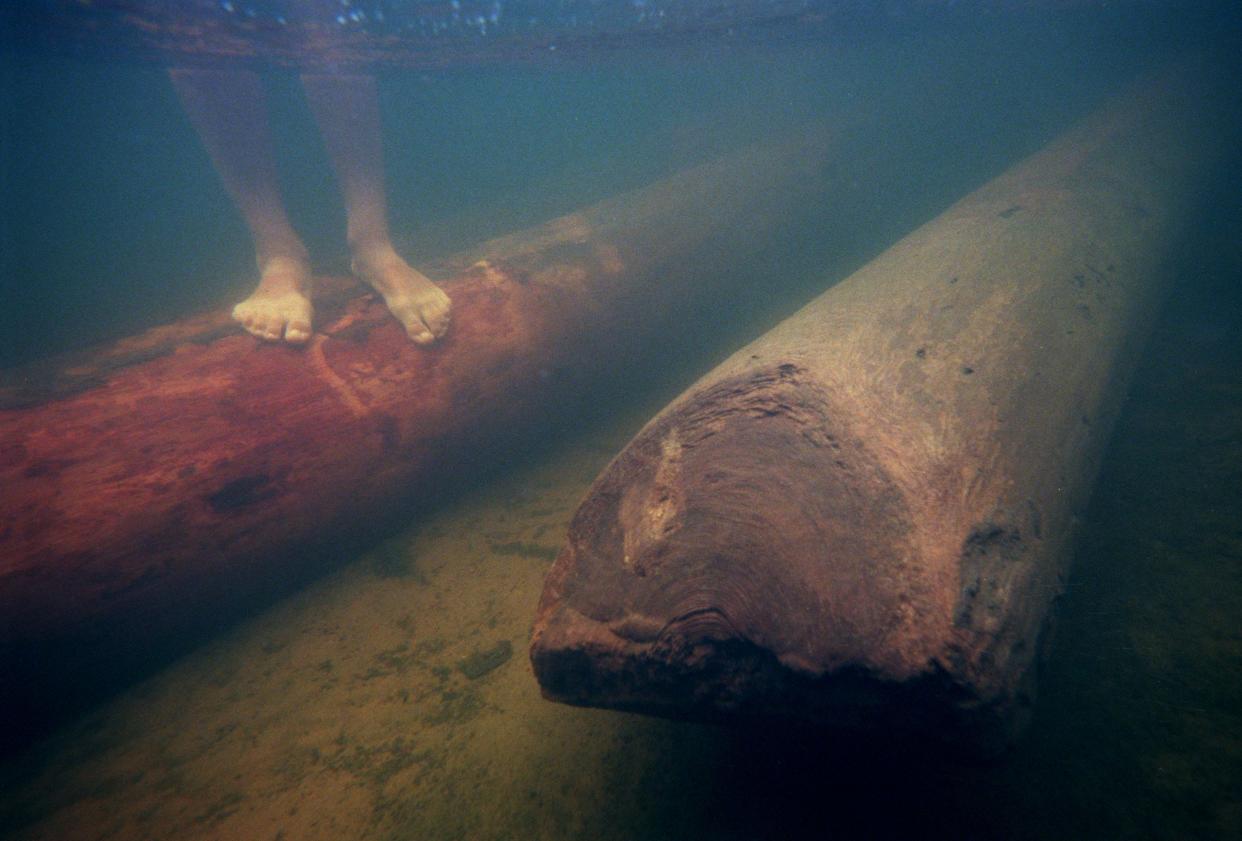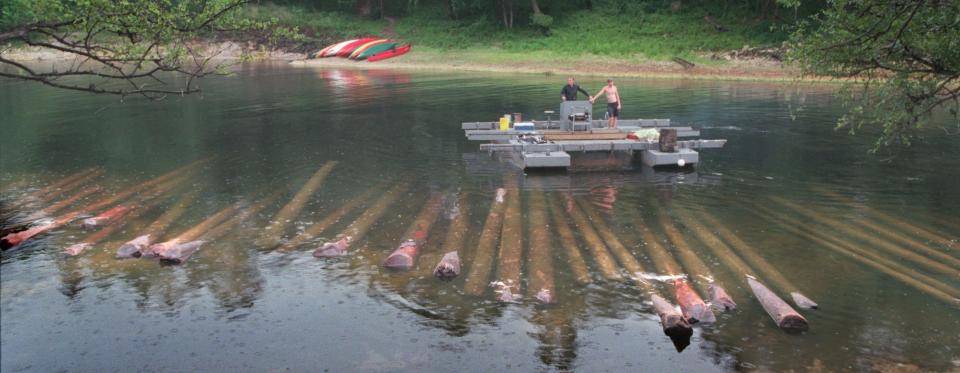Ecology of the St. Johns: 20th-century deadwood logs are salvaged from river bottom

Some of you may remember that I teach a course at Jacksonville University entitled “Ecology of the St. Johns River.” I really enjoy exposing students to the unique features of the river, as well as using the river to illustrate basic ecological concepts.
The last several times I have taught the class, as part of the final exam, I have had the students write a “River Life” column. The purpose is two-fold. First to see what they found interesting and, second, to see how well they can write and explain some aspect of the river ecology.
This year one of the more interesting submissions was written by Abigail “Abby” Oneill. She wrote on a topic I had mentioned in lecture but expanded to include some information I did not know. Abby is from New Jersey and played lacrosse at the University of Minnesota. She is enrolled in our dual degree program where she will earn both a master's of arts in marine science and a master's in public policy.
River Life by another student: Jacksonville can help prevent algal blooms and keep St. Johns River teeming with life
River Life learning journey: St. Johns trip takes students about halfway up the 300-mile waterway
This is her column with some minor edits:
It’s no secret how important the St Johns River is and has been to the infrastructure of Northeast Florida. These days, we see massive cargo ships and barges traverse up and down the lazy river. If you were to look back far enough though, you would see infrastructure in the form of massive cypress and pine trees.
As the 19th century turned into the 20th, loggers south on the St Johns River would cut down massive trees, some cypress as large as 100 feet tall and 16 feet in diameter, lug them through the woods and raft them down the St Johns River to a sawmill.
Loggers would claim their trees by labeling them with their unique mark and using the honor system to collect what they were owed by the sawmill. Business was booming, entire logging and sawmill towns popped up and productivity for building was at an all-time high. Most of the wood was shipped to New England. However, just as the logging industry boomed, exploitation led to a bust as all of the ancient trees were chopped down and sent downriver toward Jacksonville.
Yet that is not where the story ends.
The state of Florida estimates that roughly 10% of those massive cypress and pine never made it to the sawmill. Instead those trees sank to the bottom of the St Johns and were, at least at the time, seemingly lost forever. Today, we know that those trees at the bottom sank to where the silt created anoxic conditions that were the perfect environment to promote preservation.
For years they sat at the bottom of the river unknown and then, once discovered, the state of Florida considered them sunk on sovereign land and therefore deemed them state property. In 2000, the state lifted the moratorium on “deadhead logs” and allowed some to salvage them from the river bottom. The state was strict on just who could do this work and still regulates who can legally collect them through the Department of Environmental Protection. Even today, if a logging company’s brand is on a retrieved log, they can claim ownership.

Salvaging logs from the bottom of a river is not the same as salvaging a sunken boat or other debris using barges or tugs with cranes. Instead, pontoon boats with 3,000-pound winches raise up wood discovered at the bottom by divers who sift through turbid waters and gators in hopes of finding bark.
The final result, though, is a craftsman’s dream. The wood is strong — never exposed to pesticides and pollutants. It’s also beautiful as a result of being surrounded by tannins and other minerals in the sediments for over a hundred years. After sitting to dry for months, then being dried further in a kiln, the wood can be used for anything from an art piece to a structurally sound piece of furniture.
For many, the logs found on the bottom of the river are like any other sunken treasure. The salvage projects even grew large enough for a Florida salvager to make it onto the History Channel show “Ax Men,” known for following logging operations across the United States. Sure, such loggers exist in other locations, but there is something about knowing there may be a 100-foot cypress tree under the river that is too cool to pass up.
We often look at history and see negatives. Surely chopping entire forests and shipping the wood north was not a move many would appreciate now. Without it, though, the opportunity for this sunken treasure would not exist and would not allow craftsmen to reclaim historical timber and use it for new and beautiful designs.
It does represent an aspect of the river that many people are unaware.

Glad you asked River Life
Does generating electric power using coal impact the St. Johns River?
We often encourage people to practice conservation of our natural resources like food, water and energy, while encouraging them to reduce the amount of waste, especially single-use plastics, but many don’t know the link between water and coal power generation.
So, yes, generating electric power using coal does impact the St. Johns River. Water is used to extract, wash and sometimes transport the coal; to generate steam and then cool that steam that was used to make electricity; and to control pollution from the plant. That water is removed from the St. Johns River and what doesn’t escape as steam is returned to the river. And the very process of removing and returning the water has an impact. More on this topic in a later column.
River Life runs the first Tuesday of each month in The Times-Union. Email Quinton White, executive director of Jacksonville University’s Marine Science Research Institute, with questions about our waterways at qwhite@ju.edu. For more on the MSRI, visit ju.edu/msri.
This article originally appeared on Florida Times-Union: Deadwood logs are salvageable from bottom of St. Johns River bottom

